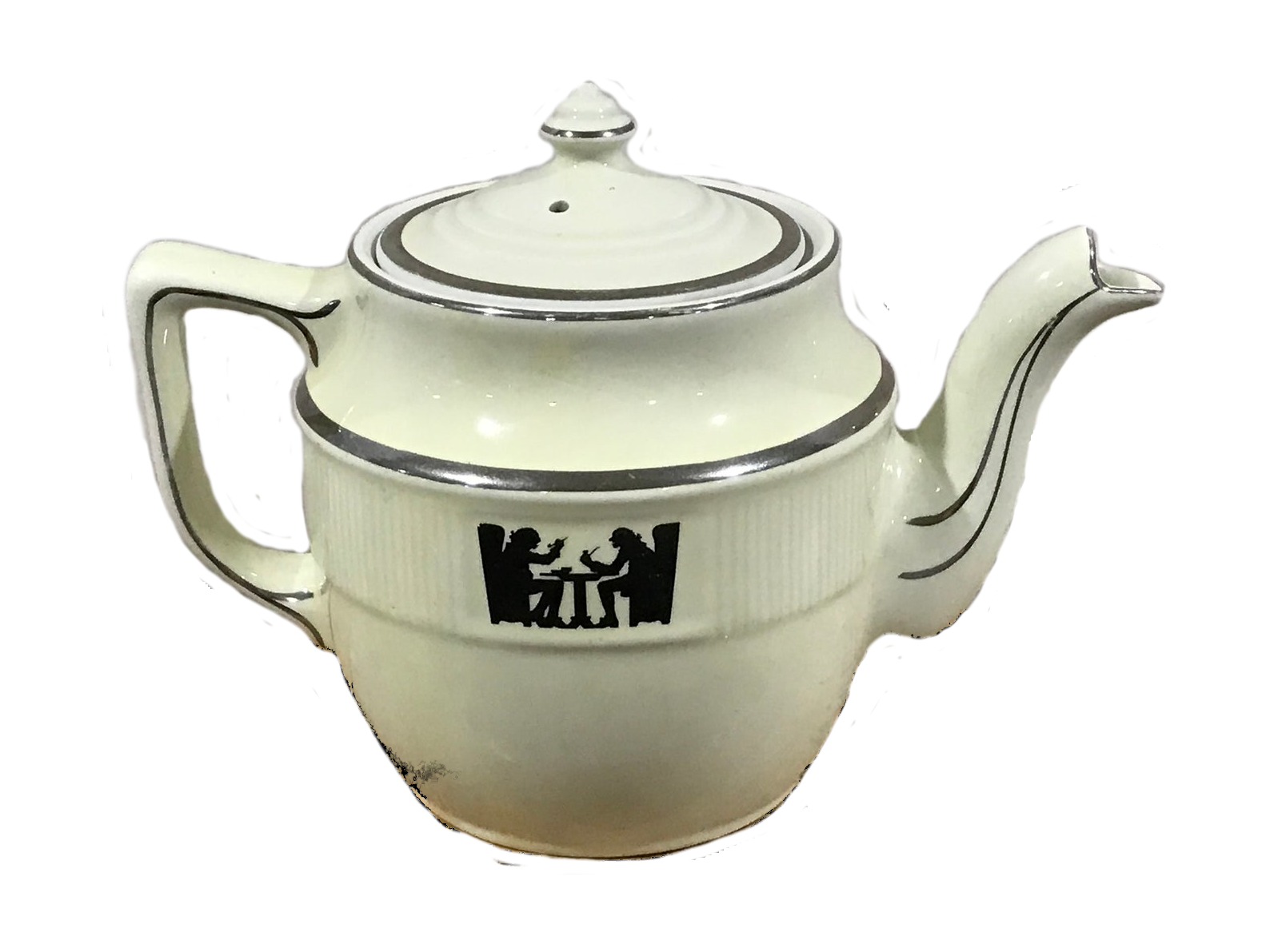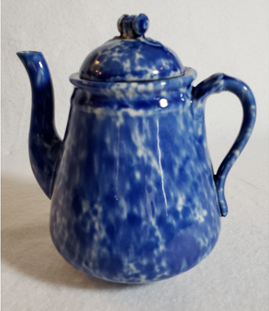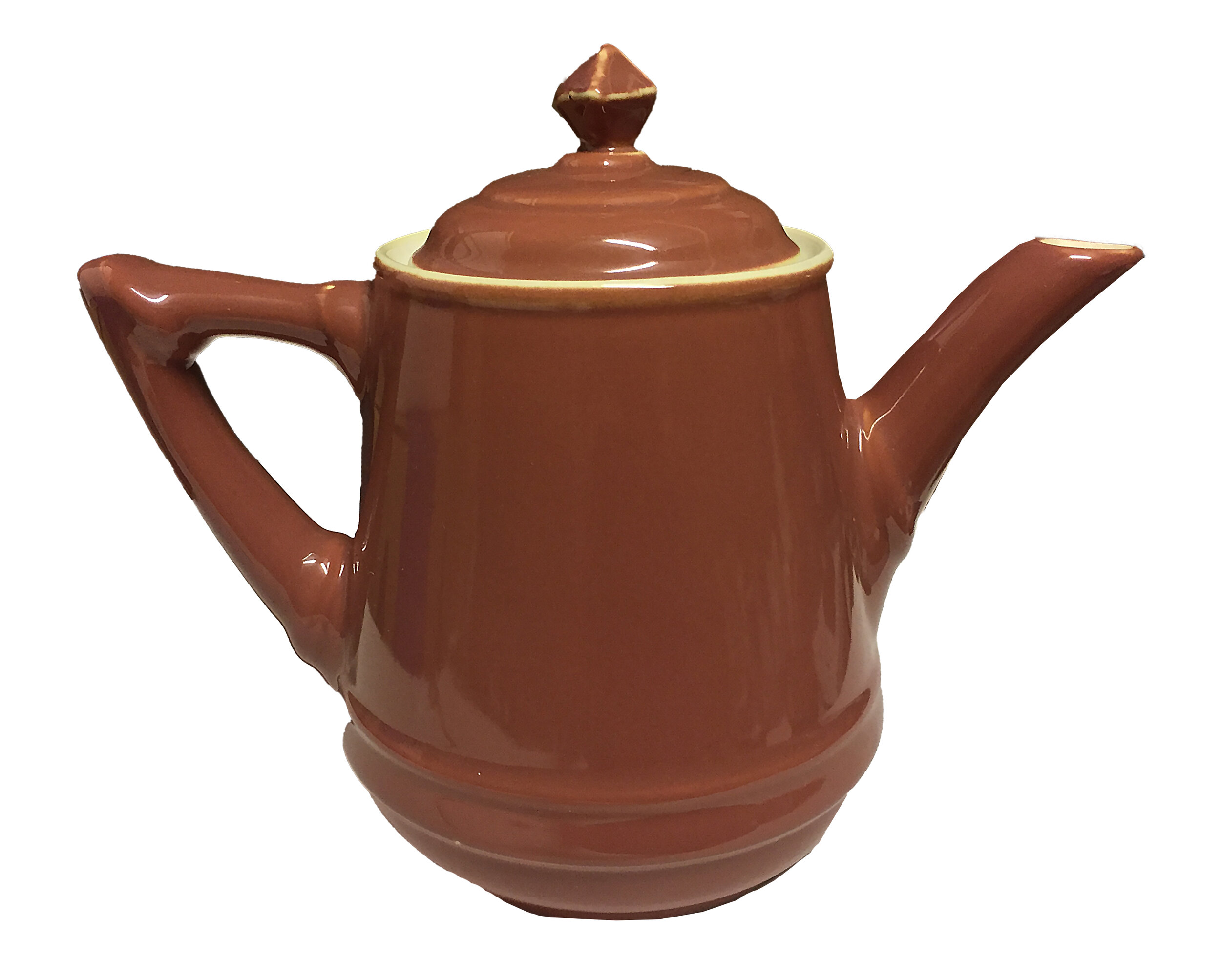Teapot
Coffee Pot
or Chocolate Pot?
In the Victorian era, a hostess would never consider serving tea to her guests from a chocolate pot or coffee from a teapot. Each beverage would have its own specially designed pot, created to increase the flavor of the specific beverage.
Lotus Ware tea set, Knowles, Taylor & Knowles, 1892 - 1896
The difference between the pots lies in the shape. Teapots are typically short and round, or “short and stout” as the children’s song goes. Even a taller teapot should still be round at the base. This extra space allows the tea to move around and release flavors as it steeps. The spout of a teapot is always in the center of the pot and it is short in length. Presumably, this made it easier to clean when tea leaves would escape the grate and clog up the spout. The teapots pictured below are from Hall China and represent traditional teapot design.
Teapots



Coffee Pots
Coffee pots are taller and slenderer. This is to maintain the heat level as coffee cools more quickly than tea. Additionally, tea water is usually heated to boiling, a higher temperature than coffee. Retaining heat is also the reason the spout is generally located at the bottom of the pot. The longer spout keeps the cooler air at a distance from the coffee. It also ensures the liquid is not poured out too quickly as the pot is turned for serving into a cup. Of the coffee pots seen below, the salmon-colored Fiesta Ware pot made by Homer Laughlin, takes liberties with spout design. This type of spout is more typical of chocolate pots.
Handles differ as well. The handle on a coffee pot is usually attached near the lid and near the bottom of the pot. This long handle helps to balance it when pouring from the tall pot. The handle is often like a strap. The handle on a teapot usually begins and ends on the on the rounded part of the pot. The pots shown below have typical coffee pot handles. Both the yellow and blue pots were made by Taylor, Smith, & Taylor.
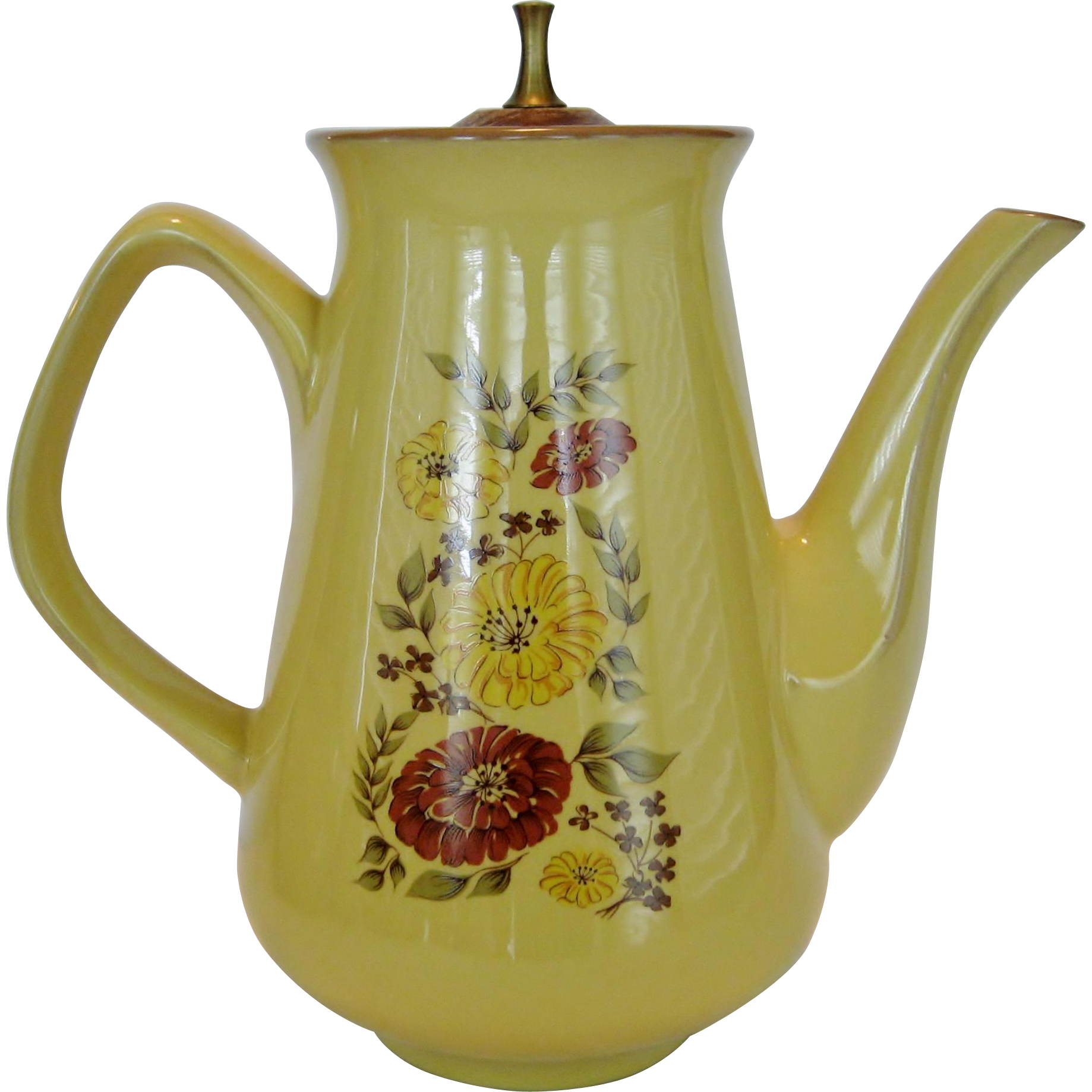
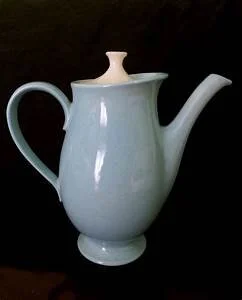

Chocolate Pots
Chocolate Pots are tall, somewhat slender with a small spout at the top. The cap on the top of the pot is wide enough to allow a wood frothier (or frother) to emulsify the chocolate, release its full aroma, and create froth. The spout at the top is wider than that of a teapot or coffee pot so that the froth will pour out unobstructed.
Early chocolate pots had an opening in the lid so that a stirring stick called a molinet could be inserted to stir the chocolate that tended to settle. Making hot chocolate was a laborious endeavor that included scraping shavings from the cacao beans, melting them in hot water, adding sugar, milk, and spices, and then continuously stirring the mixture with the molinet. By the time East Liverpool potteries were in operation, making hot chocolate was not so different than the process used today. It was no longer necessary to have the molinet hole in the lid. A recipe from Housekeeping in Old Virginia, 1879, explains the chocolate process with this recipe: “Scrape fine one square of Baker’s chocolate (which will be an ounce). Put it in a pint of boiling water and milk, mixed in equal parts. Boil ten minutes, and during this time mill it or whip it with a Dover egg-whip (one with a wheel), which will make it foam beautifully. Sweeten to the taste, at table.”
Both of these chocolate pots are Lotus Ware made by Knowles Taylor and Knowles. To learn more about Lotus Ware, see the Docent Chats for this online eexhibit.
These pots exhibit the attributes of a traditional chocolate pot. Chocolate pots were also much more decorative than their cousins the coffee pot and teapot.
Creative License
Ceramics designers did not follow these “shape” rules religiously. So, there are teapots that are taller, coffee pots that are shorter and spouts in varying heights. Hall China catalogs showed sections for teapots and for coffee pots and then also sections of containers simply labeled “pots.” These servers combined the attributes of all three beverage servers and could be used interchangeably. By the mid-1900s, lifestyles were more casual and less dictated by Victorian rules of dining etiquette.
Hall also pushed the boundaries of design with pots that they made in collaboration with other businesses. For example, the Drip-o-lator resembles a teapot more than it does a coffee pot. In the 1930's, Hall China produced the Drip-o-lator coffee pot for the Enterprise Aluminum Company in Massillon, Ohio. There was an aluminum insert that went between the pot and the lid to make the coffee. The insert was removed for serving. Inside, on the bottom it read "For piping hot coffee preheat with hot water. Do not place over open flame."
Another example is the creative Ronald Reagan and Sherlock Holmes teapots that were designed by Don Schreckengost and made by Hall China. These tall pots have qualities that are more typically found on a coffee pot. These can be seen below along with Hall’s Silhouette pattern Drip-O-lator. SMW

